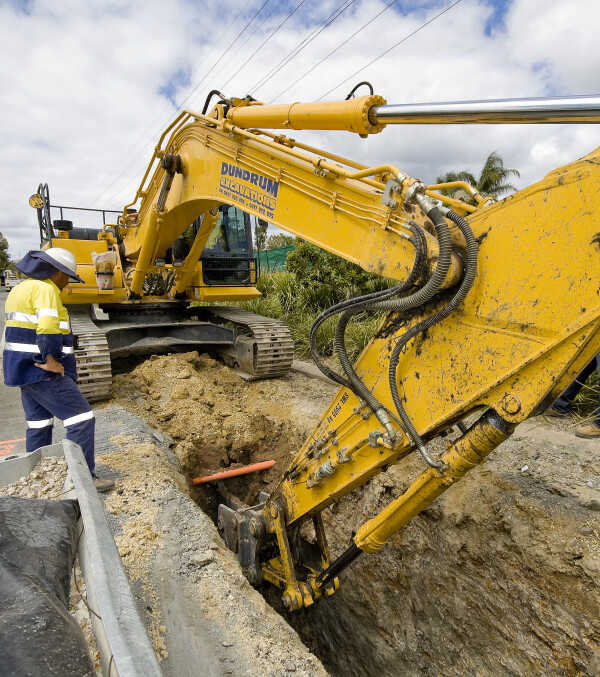|
Customer: NSW & Queensland Governments Contract: Design, Construct, Operate & Maintain Location: Tweed Heads, NSW |
Fast Facts
|
We devised, designed, constructed and operated the unique Tweed River Entrance Sand Bypassing system, building it in the late 1990s and operating it for 25 years. The facility ensures a safe and navigable entrance to the Tweed River, and maintains the ecology and amenity of beaches on the southern Gold Coast.
The centrepiece of the facility is the sand collection jetty which is approximately 450 m long and extends approx 300 m from the shoreline. A sand trap or depression is formed under the jetty by the operation of 10 submerged jet pumps approximately 10 m below the seabed. Natural wave action feeds sand into this trap. Up to five jet pumps are then used to create a sand-water flume which flows under gravity to the control area.
An unobtrusive control building housing the pumps, electrical equipment and control system sits at the shore end of the jetty. A 5 km long slurry pipeline transports the sand from the facility under the Tweed River, through the townships of Tweed and Coolangatta to the discharge outlets located at Point Danger, Snapper Rocks and Kirra Point. At its peak it can transport 1,000 tonnes of sand per hour.
The design and construction phase involved a wide and multi-disciplined range of activities – from jetty piling, concrete foundations and building work through to design and installation of pipelines (trenched and trenchless), piping, equipment and electrical wiring.
The project was completed on time, within budget, without lost-time injury and without any environmental incidents.
Operations Phase
After the successful construction and commissioning, we continued as the operator and maintainer of the system for 25 years.
Throughout its operating period, we collected detailed records for the government, including pump activity statistics and sand quantities pumped to each outlet. On average the facility moved around 800,000 tonnes or 500,000 m3 of sand per annum.
The Tweed Sand Bypassing project has a wide range of stakeholders who each have specific interests, including recreational fishermen, tourism operators, swimmers and surfers. Managing the interests of such a wide range of stakeholders was a difficult but important part of our operational focus.
Upon handing the facility back to government in September 2024, Matthew Harry, Principal Manager Tweed Sand Bypassing (TSB), within Transport for NSW said...
"The Concession Agreement for operation of the sand bypassing system commenced in May 2001, coming into effect following construction which was also undertaken by McConnell Dowell. Although plenty of time has passed, the system has performed well and there has been minimal change to the core infrastructure and functionality.
"I want to congratulate the team at McConnell Dowell on the successful execution of the responsibilities detailed in the Concession Agreement. From my time in TSB, I have experienced great collaboration between all parties which has contributed to the ongoing success and outstanding reputation of Tweed Sand Bypassing."










